SWG Kunstlexikon
JEFF WALL
VIDEO / FILM
Jeff Wall Interview | Pictures Like Poems | Louisiana Channel | Discover what inspires and motivates one of the modern masters of photography, Canadian Jeff Wall, who here discusses a selection of his impressive photographs and their often meticulous compositions. “The camera creates such a beautiful illusion, an illusion so similar to what we see with our eyes, it seems as though we’re looking through the surface.” To be observant is key to Jeff Wall. Picture making of any kind – from photography to sculpturing – expresses an acceptance of the way things are and appear: “I love the appearance of a tree or a face or a sidewalk… I get enjoyment just from seeing them.” Wall’s photographs are often made from something as abstract as an occurrence – or the absence of an occurrence – and when there is no explanatory text to guide you, you have to be sensitive to what you’re looking at and figure out the story for yourself. Like in poetry, the subject and its value has to come through to you by means of what it makes you feel: “Take away the verbal description, you get into the pure picture – and then you have to relate to it as a poem.” One part of Wall’s pictures is traditional photomontages, where one previews in the mind’s eye what a place would potentially look like in a picture. The other part is what he calls ‘near-documentary photographs’, which resemble snapshots but are not. Creating these is a laborious process where a scene sometimes – and always out of necessity – has to be completely reconstructed and staged, often from several pictures. This act of composition and construction is of utmost interest to Wall, who is intrigued by the playful nature of ‘truth’ in photography: “A very accurate replica of a place itself has a documentary quality.” Jeff Wall (b. 1946) is a Canadian photographer based in Vancouver. In the 1970s he began to produce and exhibit large-scale transparent photographs mounted on light boxes, which became his first artistic hallmark. He holds a MA in art history from University of British Columbia and the Courtauld Institute in London. His work has been exhibited in numerous international exhibitions, including Tate Modern in London, The Art Institute of Chicago, the San Francisco Museum of Art, National Gallery of Victoria in Melbourne, the Museo Tamayo in Mexico City, Stedelijk Museum Amsterdam, Kunsthaus Bregenz and MoMA in New York. Wall is the recipient of numerous prizes, including the Erna and Victor Hasselblad Foundation International Award in Photography (2002) and the Audian Prize for Lifetime Achievement in the Visual Arts (2008). Moreover, he was named Officer of the Order of Canada in 2007 | Jeff Wall was interviewed by Marc-Christoph Wagner at the Louisiana Museum of Modern Art, Humlebæk in March 2015 in connection to the exhibition ‘Jeff Wall: Tableaux Pictures Photographs – Works from 1996-2013’ | All the pictures featured in the video can be found in the publication of the same title. The three pictures discussed in depth in the video are ‘Concreteball’ (2002), ‘Overpass’ (2001) and ‘In Front of a Nightclub’ (2006), all by Jeff Wall | Camera Kasper Kiertzner | Edited by Kamilla Bruus | Produced by Marc-Christoph Wagner | Cover photo ‘After Invisible Man’ by Ralph Ellison, the Prologue (2000) by Jeff Wall | Copyright Louisiana Channel | Louisiana Museum of Modern Art | 2015 | YouTube
Photographers in Focus | Jeff Wall | NOWNESS | “The only way to continue in the spirit of the avant-garde is to experiment with your relation to tradition,” Vancouver-born photographer Jeff Wall once said about his early work. Wall, who is best known for his suspense-filled reconstructions of quotidian life, came to photography as an art historian in the 1970s. Since then his images have referenced many, seemingly disparate, things such as nineteenth-century painting, commercial advertising and street photography. The Canadian artist’s work subverts the classic role of photography in a process he calls “near-documentary,” which embraces location-staging and digital manipulation. One of his most famous works, Mimic (1982), is a recreation of a racial incident that the artist witnessed on the streets of Vancouver, but did not capture at the time. The image has all the drama and spontaneity of street photography, but constructed with the exacting precision of a film set. This mix between artifice and truth makes viewers question the role of photography as both an art form and a documentary device. Picture for Women (1979), another of Wall’s enduring pieces, shows a woman’s looking out into the distance, and is a conceptual take on Manet’s Un bar aux Folies Bergère, a mirrored scene where a barmaid stares despondently out from the canvas. Wall’s multilayered work not only considers the oppressive nature of the male gaze, but also reflects on the act of taking a picture as he places himself and the camera within the frame. Whether it’s an image of Bedouin olive pickers sleeping on a farm, a homeless woman under a freeway, or Russians rising from the dead during the Afghanistan war, Wall does not rely on being at the right place at the right time. Every picture he creates is deliberate, contextual and bursting with narrative – turning photography into the painting of our times | YouTube
Jeff Wall | Tableaux Pictures Photographs | 1996 -2013 | Arttube | How much does Jeff Wall leave to chance? And what is the subtle difference between fiction and the imaginary? Wall (1948) is eager to challenge preconceived notions and expectations, also about his own work. Days before the opening of the exhibition Jeff Wall: Tableaux Pictures Photographs 1996-2013, the artist and curator of photography Hripsimé Visser stroll through the exhibition and discuss clichés, fact and fiction around his work. This video introduces the exhibition at the Stedelijk and casts a light on Wall’s sometimes mystical and at the same time monumental photography and method which moves between reminiscence, mise en scene and realism | YouTube
JEFF WALL
VIDEO / FILM
Jeff Wall Interview | Pictures Like Poems | Louisiana Channel | Discover what inspires and motivates one of the modern masters of photography, Canadian Jeff Wall, who here discusses a selection of his impressive photographs and their often meticulous compositions. “The camera creates such a beautiful illusion, an illusion so similar to what we see with our eyes, it seems as though we’re looking through the surface.” To be observant is key to Jeff Wall. Picture making of any kind – from photography to sculpturing – expresses an acceptance of the way things are and appear: “I love the appearance of a tree or a face or a sidewalk… I get enjoyment just from seeing them.” Wall’s photographs are often made from something as abstract as an occurrence – or the absence of an occurrence – and when there is no explanatory text to guide you, you have to be sensitive to what you’re looking at and figure out the story for yourself. Like in poetry, the subject and its value has to come through to you by means of what it makes you feel: “Take away the verbal description, you get into the pure picture – and then you have to relate to it as a poem.” One part of Wall’s pictures is traditional photomontages, where one previews in the mind’s eye what a place would potentially look like in a picture. The other part is what he calls ‘near-documentary photographs’, which resemble snapshots but are not. Creating these is a laborious process where a scene sometimes – and always out of necessity – has to be completely reconstructed and staged, often from several pictures. This act of composition and construction is of utmost interest to Wall, who is intrigued by the playful nature of ‘truth’ in photography: “A very accurate replica of a place itself has a documentary quality.” Jeff Wall (b. 1946) is a Canadian photographer based in Vancouver. In the 1970s he began to produce and exhibit large-scale transparent photographs mounted on light boxes, which became his first artistic hallmark. He holds a MA in art history from University of British Columbia and the Courtauld Institute in London. His work has been exhibited in numerous international exhibitions, including Tate Modern in London, The Art Institute of Chicago, the San Francisco Museum of Art, National Gallery of Victoria in Melbourne, the Museo Tamayo in Mexico City, Stedelijk Museum Amsterdam, Kunsthaus Bregenz and MoMA in New York. Wall is the recipient of numerous prizes, including the Erna and Victor Hasselblad Foundation International Award in Photography (2002) and the Audian Prize for Lifetime Achievement in the Visual Arts (2008). Moreover, he was named Officer of the Order of Canada in 2007 | Jeff Wall was interviewed by Marc-Christoph Wagner at the Louisiana Museum of Modern Art, Humlebæk in March 2015 in connection to the exhibition ‘Jeff Wall: Tableaux Pictures Photographs – Works from 1996-2013’ | All the pictures featured in the video can be found in the publication of the same title. The three pictures discussed in depth in the video are ‘Concreteball’ (2002), ‘Overpass’ (2001) and ‘In Front of a Nightclub’ (2006), all by Jeff Wall | Camera Kasper Kiertzner | Edited by Kamilla Bruus | Produced by Marc-Christoph Wagner | Cover photo ‘After Invisible Man’ by Ralph Ellison, the Prologue (2000) by Jeff Wall | Copyright Louisiana Channel | Louisiana Museum of Modern Art | 2015 | YouTube
Photographers in Focus | Jeff Wall | NOWNESS | “The only way to continue in the spirit of the avant-garde is to experiment with your relation to tradition,” Vancouver-born photographer Jeff Wall once said about his early work. Wall, who is best known for his suspense-filled reconstructions of quotidian life, came to photography as an art historian in the 1970s. Since then his images have referenced many, seemingly disparate, things such as nineteenth-century painting, commercial advertising and street photography. The Canadian artist’s work subverts the classic role of photography in a process he calls “near-documentary,” which embraces location-staging and digital manipulation. One of his most famous works, Mimic (1982), is a recreation of a racial incident that the artist witnessed on the streets of Vancouver, but did not capture at the time. The image has all the drama and spontaneity of street photography, but constructed with the exacting precision of a film set. This mix between artifice and truth makes viewers question the role of photography as both an art form and a documentary device. Picture for Women (1979), another of Wall’s enduring pieces, shows a woman’s looking out into the distance, and is a conceptual take on Manet’s Un bar aux Folies Bergère, a mirrored scene where a barmaid stares despondently out from the canvas. Wall’s multilayered work not only considers the oppressive nature of the male gaze, but also reflects on the act of taking a picture as he places himself and the camera within the frame. Whether it’s an image of Bedouin olive pickers sleeping on a farm, a homeless woman under a freeway, or Russians rising from the dead during the Afghanistan war, Wall does not rely on being at the right place at the right time. Every picture he creates is deliberate, contextual and bursting with narrative – turning photography into the painting of our times | YouTube
Jeff Wall | Tableaux Pictures Photographs | 1996 -2013 | Arttube | How much does Jeff Wall leave to chance? And what is the subtle difference between fiction and the imaginary? Wall (1948) is eager to challenge preconceived notions and expectations, also about his own work. Days before the opening of the exhibition Jeff Wall: Tableaux Pictures Photographs 1996-2013, the artist and curator of photography Hripsimé Visser stroll through the exhibition and discuss clichés, fact and fiction around his work. This video introduces the exhibition at the Stedelijk and casts a light on Wall’s sometimes mystical and at the same time monumental photography and method which moves between reminiscence, mise en scene and realism | YouTube
JEFF WALL
VIDEO / FILM
Jeff Wall Interview | Pictures Like Poems | Louisiana Channel | Discover what inspires and motivates one of the modern masters of photography, Canadian Jeff Wall, who here discusses a selection of his impressive photographs and their often meticulous compositions. “The camera creates such a beautiful illusion, an illusion so similar to what we see with our eyes, it seems as though we’re looking through the surface.” To be observant is key to Jeff Wall. Picture making of any kind – from photography to sculpturing – expresses an acceptance of the way things are and appear: “I love the appearance of a tree or a face or a sidewalk… I get enjoyment just from seeing them.” Wall’s photographs are often made from something as abstract as an occurrence – or the absence of an occurrence – and when there is no explanatory text to guide you, you have to be sensitive to what you’re looking at and figure out the story for yourself. Like in poetry, the subject and its value has to come through to you by means of what it makes you feel: “Take away the verbal description, you get into the pure picture – and then you have to relate to it as a poem.” One part of Wall’s pictures is traditional photomontages, where one previews in the mind’s eye what a place would potentially look like in a picture. The other part is what he calls ‘near-documentary photographs’, which resemble snapshots but are not. Creating these is a laborious process where a scene sometimes – and always out of necessity – has to be completely reconstructed and staged, often from several pictures. This act of composition and construction is of utmost interest to Wall, who is intrigued by the playful nature of ‘truth’ in photography: “A very accurate replica of a place itself has a documentary quality.” Jeff Wall (b. 1946) is a Canadian photographer based in Vancouver. In the 1970s he began to produce and exhibit large-scale transparent photographs mounted on light boxes, which became his first artistic hallmark. He holds a MA in art history from University of British Columbia and the Courtauld Institute in London. His work has been exhibited in numerous international exhibitions, including Tate Modern in London, The Art Institute of Chicago, the San Francisco Museum of Art, National Gallery of Victoria in Melbourne, the Museo Tamayo in Mexico City, Stedelijk Museum Amsterdam, Kunsthaus Bregenz and MoMA in New York. Wall is the recipient of numerous prizes, including the Erna and Victor Hasselblad Foundation International Award in Photography (2002) and the Audian Prize for Lifetime Achievement in the Visual Arts (2008). Moreover, he was named Officer of the Order of Canada in 2007 | Jeff Wall was interviewed by Marc-Christoph Wagner at the Louisiana Museum of Modern Art, Humlebæk in March 2015 in connection to the exhibition ‘Jeff Wall: Tableaux Pictures Photographs – Works from 1996-2013’ | All the pictures featured in the video can be found in the publication of the same title. The three pictures discussed in depth in the video are ‘Concreteball’ (2002), ‘Overpass’ (2001) and ‘In Front of a Nightclub’ (2006), all by Jeff Wall | Camera Kasper Kiertzner | Edited by Kamilla Bruus | Produced by Marc-Christoph Wagner | Cover photo ‘After Invisible Man’ by Ralph Ellison, the Prologue (2000) by Jeff Wall | Copyright Louisiana Channel | Louisiana Museum of Modern Art | 2015 | YouTube
Photographers in Focus | Jeff Wall | NOWNESS | “The only way to continue in the spirit of the avant-garde is to experiment with your relation to tradition,” Vancouver-born photographer Jeff Wall once said about his early work. Wall, who is best known for his suspense-filled reconstructions of quotidian life, came to photography as an art historian in the 1970s. Since then his images have referenced many, seemingly disparate, things such as nineteenth-century painting, commercial advertising and street photography. The Canadian artist’s work subverts the classic role of photography in a process he calls “near-documentary,” which embraces location-staging and digital manipulation. One of his most famous works, Mimic (1982), is a recreation of a racial incident that the artist witnessed on the streets of Vancouver, but did not capture at the time. The image has all the drama and spontaneity of street photography, but constructed with the exacting precision of a film set. This mix between artifice and truth makes viewers question the role of photography as both an art form and a documentary device. Picture for Women (1979), another of Wall’s enduring pieces, shows a woman’s looking out into the distance, and is a conceptual take on Manet’s Un bar aux Folies Bergère, a mirrored scene where a barmaid stares despondently out from the canvas. Wall’s multilayered work not only considers the oppressive nature of the male gaze, but also reflects on the act of taking a picture as he places himself and the camera within the frame. Whether it’s an image of Bedouin olive pickers sleeping on a farm, a homeless woman under a freeway, or Russians rising from the dead during the Afghanistan war, Wall does not rely on being at the right place at the right time. Every picture he creates is deliberate, contextual and bursting with narrative – turning photography into the painting of our times | YouTube
Jeff Wall | Tableaux Pictures Photographs | 1996 -2013 | Arttube | How much does Jeff Wall leave to chance? And what is the subtle difference between fiction and the imaginary? Wall (1948) is eager to challenge preconceived notions and expectations, also about his own work. Days before the opening of the exhibition Jeff Wall: Tableaux Pictures Photographs 1996-2013, the artist and curator of photography Hripsimé Visser stroll through the exhibition and discuss clichés, fact and fiction around his work. This video introduces the exhibition at the Stedelijk and casts a light on Wall’s sometimes mystical and at the same time monumental photography and method which moves between reminiscence, mise en scene and realism | YouTube



